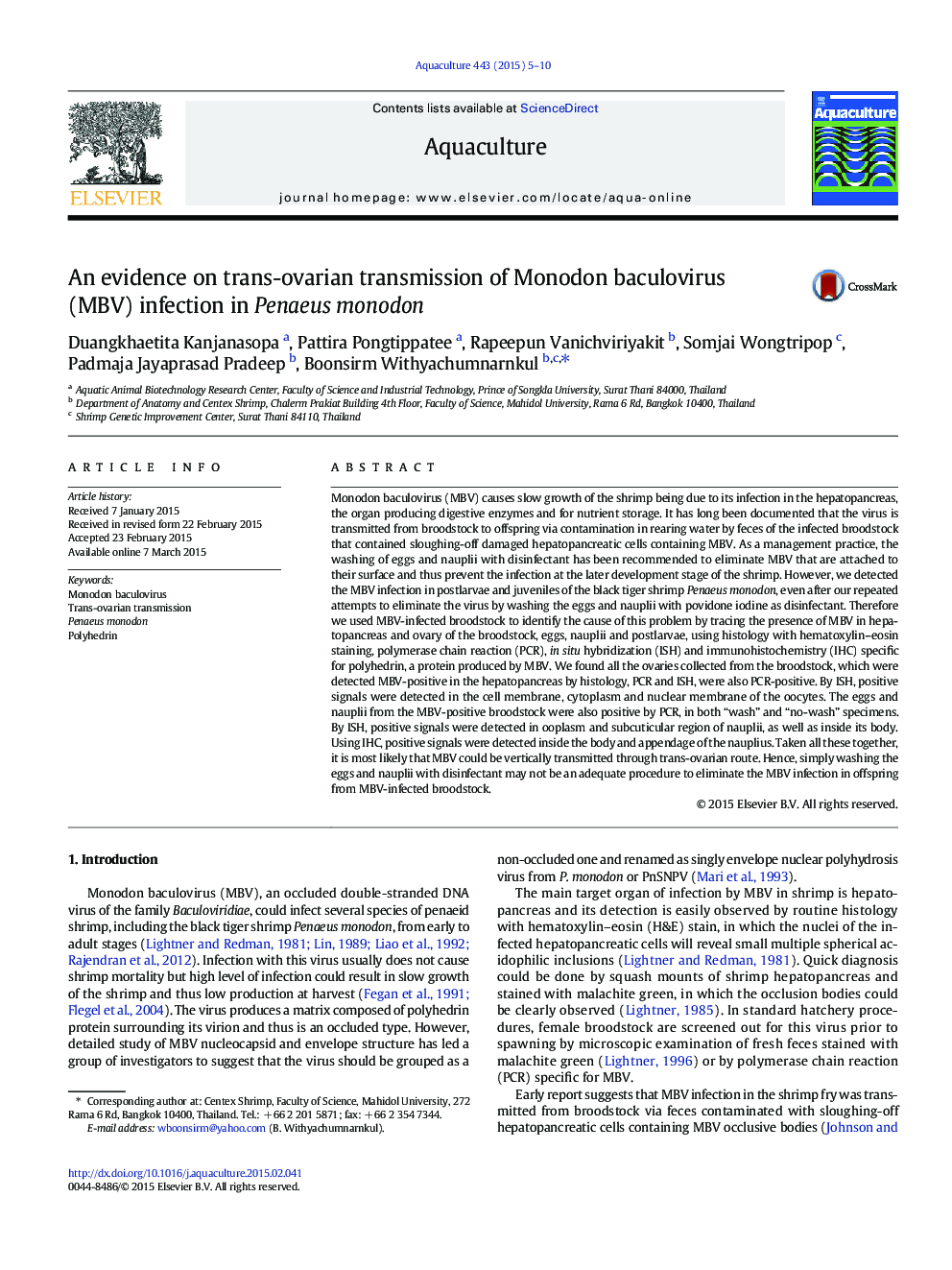| Article ID | Journal | Published Year | Pages | File Type |
|---|---|---|---|---|
| 2421570 | Aquaculture | 2015 | 6 Pages |
•Washing eggs and nauplii with disinfectant did not free Monodon baculovirus (MBV) infection from postlarvae.•Polyhedrin, the protein produced by MBV, was present inside the oocytes, eggs and nauplii of the shrimp.•MBV is also transmitted from the broodstock to its offspring by trans-ovarian route, not only by contamination from the broodstock's feces.
Monodon baculovirus (MBV) causes slow growth of the shrimp being due to its infection in the hepatopancreas, the organ producing digestive enzymes and for nutrient storage. It has long been documented that the virus is transmitted from broodstock to offspring via contamination in rearing water by feces of the infected broodstock that contained sloughing-off damaged hepatopancreatic cells containing MBV. As a management practice, the washing of eggs and nauplii with disinfectant has been recommended to eliminate MBV that are attached to their surface and thus prevent the infection at the later development stage of the shrimp. However, we detected the MBV infection in postlarvae and juveniles of the black tiger shrimp Penaeus monodon, even after our repeated attempts to eliminate the virus by washing the eggs and nauplii with povidone iodine as disinfectant. Therefore we used MBV-infected broodstock to identify the cause of this problem by tracing the presence of MBV in hepatopancreas and ovary of the broodstock, eggs, nauplii and postlarvae, using histology with hematoxylin–eosin staining, polymerase chain reaction (PCR), in situ hybridization (ISH) and immunohistochemistry (IHC) specific for polyhedrin, a protein produced by MBV. We found all the ovaries collected from the broodstock, which were detected MBV-positive in the hepatopancreas by histology, PCR and ISH, were also PCR-positive. By ISH, positive signals were detected in the cell membrane, cytoplasm and nuclear membrane of the oocytes. The eggs and nauplii from the MBV-positive broodstock were also positive by PCR, in both “wash” and “no-wash” specimens. By ISH, positive signals were detected in ooplasm and subcuticular region of nauplii, as well as inside its body. Using IHC, positive signals were detected inside the body and appendage of the nauplius. Taken all these together, it is most likely that MBV could be vertically transmitted through trans-ovarian route. Hence, simply washing the eggs and nauplii with disinfectant may not be an adequate procedure to eliminate the MBV infection in offspring from MBV-infected broodstock.
